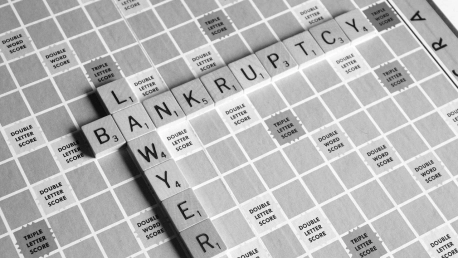Bankruptcy serves as a crucial escape hatch for individuals and companies drowning in debt. It legally liberates you from financial burdens that are too heavy to bear, providing a much-needed restart. If you’re in severe fiscal distress, it’s essential to seriously consider if bankruptcy is your best path forward.Navigating bankruptcy is complex—impacting your financial future significantly. Thus, it’s vital to understand each step and its consequences. Begin by scrutinizing your debts, assets, and all possible alternatives. If you move forward with bankruptcy, you’ll need to decide on the type that aligns with your situation, whether it’s a liquidation bankruptcy (Chapter 7) that sells off non-exempt assets to pay creditors or a reorganization under Chapter 13, which involves a repayment plan.Keep in mind that each type of bankruptcy carries its own set of qualifications, processes, and outcomes. Therefore, it’s prudent to engage with an experienced bankruptcy attorney who can navigate these legal waters, optimize the process, and minimize the negative fallout.In summary, bankruptcy is a serious decision that requires thoughtful consideration and planning. Be deliberate, seek professional guidance, and ensure you understand both the short-term relief and long-term effects on your financial health.
1. Gather Complete Financial Records
The first pivotal step in the bankruptcy process involves taking a deep dive into your financial history. This step requires a meticulous compilation of your assets and liabilities, along with a detailed accounting of your income and expenses. By gathering all relevant financial records, you can paint a full picture of your financial status, laying the groundwork for your bankruptcy case. Having this information at your disposal is not only crucial for you to assess your current position, but it is also necessary for credit counseling and for presenting a clear case to the bankruptcy court.Ensure that your record-keeping is exhaustive, including bank statements, credit card bills, loan documents, and any other evidence of your financial transactions. This detailed groundwork can ease the process that follows and minimize the risk of unforeseen complications arising from incomplete information.
2. Undergo Credit Counseling within Six Months Before Applying
Prior to initiating bankruptcy proceedings, it is legally required for you to undergo credit counseling. This step is mandatory and must occur within a six-month window before filing for bankruptcy. The counseling must be conducted by a professional approved by the U.S. Courts to ensure credibility and effectiveness.The purpose of this prerequisite is multifold. Primarily, it aims to educate the individual about the gravity of declaring bankruptcy, including its consequences and alternatives. The process is designed to help you exhaust all other financial remedies before taking the significant step of filing for bankruptcy.The completion of the counseling session will furnish you with a certificate. This certificate is not just a formality; it’s critical for moving forward in the bankruptcy process as it must be submitted alongside your other bankruptcy documents.This pre-bankruptcy credit counseling session is not merely a bureaucratic hoop to jump through. It’s an important measure that provides a comprehensive overview of your financial scenario, potentially revealing other viable paths you may take to address your financial hardships, such as debt consolidation, management plans, or negotiating with creditors.Overall, the mandatory counseling is an educational and potentially enlightening element of the bankruptcy process, one that ensures you have considered all possible options and comprehend the full extent of bankruptcy’s impact.
3. Submit the Petition
Once you’re equipped with all your financial information and have completed credit counseling, the next significant milestone is the actual filing of the bankruptcy petition. This initiates the legal proceedings. Hiring a knowledgeable bankruptcy attorney can be immensely beneficial at this juncture, facilitating the navigation of complex bankruptcy laws and preventing costly mistakes.While individuals are permitted to file on their own, the complexities and legal intricacies involved with a bankruptcy case make expert representation advisable. An attorney can help ensure that none of your eligible assets are unnecessarily seized and that your paperwork is filed correctly and completely, thus avoiding a potential dismissal of your case.
4. Attend the Creditors’ Meeting
When your bankruptcy petition is approved, it initiates the organization of a ‘341 meeting,’ also known as the creditors’ meeting, presided over by a trustee. This is not an official court proceeding but rather an opportunity for those you owe to pose queries regarding your finances. Your attendance is compulsory, while the creditors’ presence is optional.At this pivotal juncture, you’ll engage directly with the trustee, who is tasked with overseeing your bankruptcy estate. The trustee is likely to inquire about the specifics listed on your bankruptcy forms, discuss how you plan to handle any properties that are collateral for debts, and delve into the reasons behind your financial predicament.This meeting is vital, as it can shape the course of your bankruptcy case based on the discussions and disclosures made. Creditors may raise concerns, ask for clarifications, or challenge discharges depending on the information you provide. How you respond can affect the trustee’s approach to asset distribution and the overall management of your case, highlighting the importance of being transparent and well-prepared for this exchange.
5. File for the Appropriate Type of Bankruptcy
Identifying which type of bankruptcy filing suits your situation is a critical decision. Chapters 7 and 13 are the most common for individuals. Chapter 7 bankruptcy can lead to the liquidation of your assets to pay off unsecured debts, while Chapter 13 involves a repayment plan, typically spanning three to five years, enabling you to keep your assets. Other types, such as Chapters 11, 12, and 15, cater to specific categories like businesses, family farmers, or international cases.The type of bankruptcy you choose will depend on various factors, including your income level, the nature of your debts, and your long-term financial goals. It’s important to thoroughly understand the different types of bankruptcy and their respective consequences to make an informed decision that aligns with your financial recovery plan.









